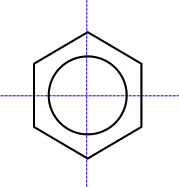Centrosymmetric on:
[Wikipedia]
[Google]
[Amazon]
 In crystallography, a centrosymmetric point group contains an inversion center as one of its symmetry elements. In such a point group, for every point (x, y, z) in the
In crystallography, a centrosymmetric point group contains an inversion center as one of its symmetry elements. In such a point group, for every point (x, y, z) in the
 In crystallography, a centrosymmetric point group contains an inversion center as one of its symmetry elements. In such a point group, for every point (x, y, z) in the
In crystallography, a centrosymmetric point group contains an inversion center as one of its symmetry elements. In such a point group, for every point (x, y, z) in the unit cell
In geometry, biology, mineralogy and solid state physics, a unit cell is a repeating unit formed by the vectors spanning the points of a lattice. Despite its suggestive name, the unit cell (unlike a unit vector, for example) does not necessaril ...
there is an indistinguishable point (-x, -y, -z). Such point groups are also said to have ''inversion'' symmetry. Point reflection
In geometry, a point reflection (point inversion, central inversion, or inversion through a point) is a type of isometry of Euclidean space. An object that is invariant under a point reflection is said to possess point symmetry; if it is invari ...
is a similar term used in geometry.
Crystals with an inversion center cannot display certain properties, such as the piezoelectric effect
Piezoelectricity (, ) is the electric charge that accumulates in certain solid materials—such as crystals, certain ceramics, and biological matter such as bone, DNA, and various proteins—in response to applied mechanical stress. The word '' ...
.
The following space groups have inversion symmetry: the triclinic space group 2, the monoclinic 10-15, the orthorhombic 47-74, the tetragonal 83-88 and 123-142, the trigonal 147, 148 and 162-167, the hexagonal 175, 176 and 191-194, the cubic 200-206 and 221-230.
Point groups lacking an inversion center (non-centrosymmetric) can be '' polar'', ''chiral
Chirality is a property of asymmetry important in several branches of science. The word ''chirality'' is derived from the Greek (''kheir''), "hand", a familiar chiral object.
An object or a system is ''chiral'' if it is distinguishable from i ...
'', both, or neither.
A '' polar'' point group is one whose symmetry operations leave more than one common point unmoved. A polar point group has no unique origin because each of those unmoved points can be chosen as one. One or more unique polar axes could be made through two such collinear unmoved points. Polar crystallographic point group
In crystallography, a crystallographic point group is a set of symmetry operations, corresponding to one of the point groups in three dimensions, such that each operation (perhaps followed by a translation) would leave the structure of a crystal u ...
s include 1, 2, 3, 4, 6, m, mm2, 3m, 4mm, and 6mm.
A ''chiral
Chirality is a property of asymmetry important in several branches of science. The word ''chirality'' is derived from the Greek (''kheir''), "hand", a familiar chiral object.
An object or a system is ''chiral'' if it is distinguishable from i ...
'' (often also called enantiomorphic) point group is one containing only proper (often called "pure") rotation symmetry. No inversion, reflection, roto-inversion or roto-reflection (i.e., improper rotation) symmetry exists in such point group. Chiral crystallographic point groups include 1, 2, 3, 4, 6, 222, 422, 622, 32, 23, and 432. Chiral molecules such as proteins crystallize in chiral point groups.
The remaining non-centrosymmetric crystallographic point groups , 2m, , m2, 3m are neither polar nor chiral.
See also
*Centrosymmetric matrix
In mathematics, especially in linear algebra and matrix theory, a centrosymmetric matrix is a matrix which is symmetric about its center. More precisely, an ''n''×''n'' matrix ''A'' = 'A'i'',''j''is centrosymmetric when its entries satisfy
: ...
* Rule of mutual exclusion The rule of mutual exclusion in molecular spectroscopy relates the observation of molecular vibrations to molecular symmetry. It states that no normal modes can be both Infrared and Raman active in a molecule that possesses a centre of symmetry. T ...
References
{{Reflist Symmetry ru:Центральная симметрия